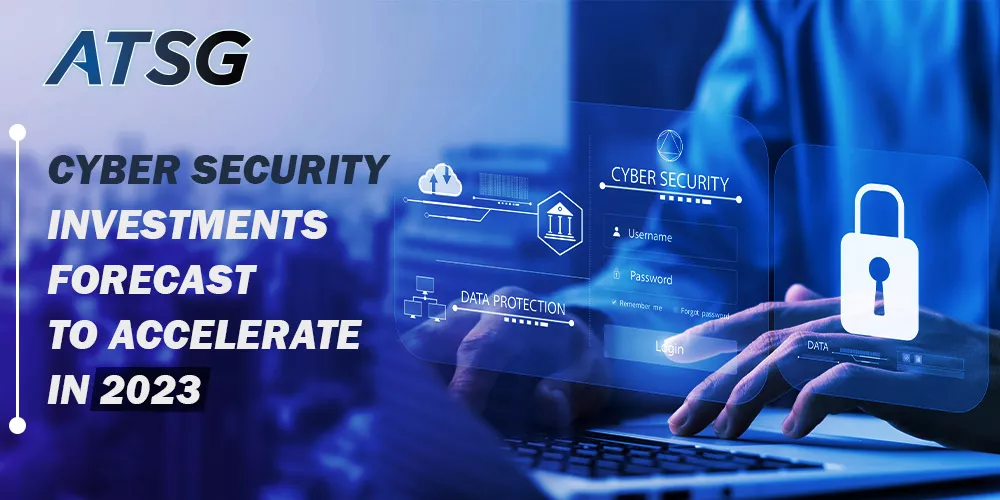The world is heading toward the year 2023, with the usual high hopes and optimism. Currently, it is that time of the year when many enterprises are re-evaluating their annual budgets. The alarming surge in the complexity and intensity of cybersecurity attacks has propelled many businesses to prioritize increasing their security spending.

We say this because, on one hand, digital transformation brings with it, a sea of opportunities and benefits for enterprises of all shapes and forms. On the other hand, it also expands the attack surface of enterprises’ digital assets. This has resulted in a major paradigm shift, in terms of how enterprises prioritize their security budgets.
Adjusting to the “New Normal”
This “new normal” has presented some challenges for Chief Information Security Officer (CISOs) as well. They have to ensure that their new distributed workforce seamlessly operates in a secure environment, without constantly having to worry about the cybersecurity threats posed to their IT operations.
Due to these factors, Gartner Suggests that there will be double-digit growth in the Integrated Risk Management (IRM) market, over the next two years. In the year 2022, spending on security services was at US $72 billion, which is expected to reach US $ 76.5 billion, in the year 2023.
Factors that will Define Security Spending Trends in 2023
Gartner has recently published a report regarding the world-wide spending on risk management and security, stating that it is expected to grow by 11.3%. This brings it to a whopping US $188 billion, in the year 2023. According to the report, the following mentioned three factors have played a major role in the recent surge in cyber security spending.

1. Zero Trust Network Access (ZTNA)
The demand for Zero Trust security, particularly for the protection of remote-based workforce, has never been this high. Enterprises are also looking for better alternatives to Virtual Private Networks (VPNs), for secure remote access.
The robust and granular level control of Zero Trust Network Access (ZTNA) is making it widely popular. Over the years, enterprises have realized that making a switch to ZTNA from VPN can result in more secure IT infrastructures.
According to Gartner’s forecast, a major chunk of remote access deployments will predominantly be served by Zero Trust Network Access (ZTNA) architectures. To be precise, this figure was at 10% in 2021, and it is predicted to reach 70%, by the year 2025.
2. The Rise of Cloud-Based Delivery Models
Hybrid and Multi-Cloud environments are becoming widely popular. This has made the management and smooth operations of multiple technologies extremely challenging. Based on the fact that Multi-Cloud environments are on the rise, Gartner predicts that the market share of Cloud-native solutions and Cloud security solutions will continue to grow in 2023.
Together, Cloud Workload Protection Platform (CWPP) and Cloud Access Security Brokers (CASB) market will witness a substantial 26.8% growth in the year 2023, making it a US $6.7 billion market.
Cybersecurity threat detection and response solutions, powered by Cloud Computing technologies, will also increase in importance over the next few years. It includes Cloud-based Managed Detection and Response (MDR), along with Endpoint Detection and Response (EDR).
3. Continuous Popularity of Remote Based Work
In the early days of the internet, no one would have imagined that work from home (WFH) will become the new and successful way of doing work. It gives employees the freedom and flexibility to maintain a work-life balance, and ensure their well-being while maximizing their productivity.
Due to this, any type of technology that ensures a protected remote-based work environment will be a “chart-buster” in the next few years. Solutions enabling faster Time to Market, and above-average Return on Investments (ROI) will definitely be encouraged. This includes a rapid surge in the demand for the following technologies, enabling a smooth, secure, and seamless remote working experience.
- Identity and Access Management (IAM)
- Secure Web Gateway
- Endpoint Protection Platforms (EPP)
- Web Application Firewalls (WAF)
Conclusion
Be it improvements in the cyber security posture, employee satisfaction, or new product launches, innovative and transformative technologies have played an instrumental role in helping enterprises pull through the economic hardships of the pandemic.
Events of the last few years have unearthed many new forms of doing business. In particular, the pandemic made one thing very clear; when enterprises align their business goals with the latest and innovative tech investments, they are laying a strong foundation for their future prosperity and growth.
Feel free to contact ATSG dinCloud, for robust Cloud Computing services and solutions for your enterprise. Our flexible, agile, and secure cloud-based services and solutions come with multi-layered security, as a built-in feature of the solution itself.




